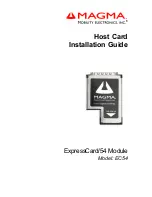
16
Extended commands of Optional Software
Extended commands of
Optional Software
By installing optional software on CNA-1, you can use
extensional commands in addition to the standard commands
described in the list of commands. To purchase an optional
software, consult with qualified Sony personnel.
This chapter describes the extended functions and the
specifications of the commands of the optional software
HZC-MSCN1 and HZC-RACN1.
Multi camera control (HZC-MSCN1)
Abstract
CNA-1 supports Multiple Camera Control by an optional
software HZC-MSCN1 that enables “MSU-mode” of Emulation
mode. In MSU-mode, CNA-1 works as a Sony MSU in Camera
Network System to handle multiple control sessions between
CNA-1 and cameras.
A control session is provided by CNA-1 as single TCP/IP
session for your system. It is the same session control
procedure as RCP-mode.
Multiple camera control methods are provided as “Camera
Selection” and “Command Destination Control” by CNA-1 in
MSU-mode. Details are described in the next section.
Figure.1 Session abstract of multiple control
MSU-mode
To enable multiple camera control by CNA-1, CNA-1 has to be
configured to MSU-mode that configurable by web
configuration menu “CNS” -> “Gateway Configuration” ->
“Emulation Mode”.
Device number of CNA-1 is handled as MSU number in the
network. The device number has to be set to different number
from all MSUs in the network.
Camera selection
CNA-1 selects a control target camera from connected
cameras by receiving a “Camera Select” command from your
system.
“Camera Select” command switches the session between
CNA-1 and Camera/CCU.
Figure.2 Camera selection
Command destination control
In principle, CNA-1 controls an only one camera selected by
“Camera Select” command. If your system needs to control
two or more cameras simultaneously, “Address Selector”
command has to be added to a head of control command to
control the destination of the command.
A command with “Address Selector” is able to send to
unselected Camera/CCU, however, your system cannot
receive any responses from unselected Camera/CCU.
Figure.3 Command destination control (Address selection)
Using commands for multiple camera control
Camera Select command
Format:
Byte command
“[CMD-GP],[PARAM0],[PARAM1]\n”
CMD-GP: 0x60/0x61 (relative/absolute)
PARAM0: 0x02
PARAM1: Camera number 0x00 to 0x60 (decimal 0 to 96)
Relative control:
It means a status query.
A camera number which is currently selected is received
by this query.
PARAM1 is ignored and does not affect.
Absolute control:
Select a camera that has PARAM1 camera number.
CNA-1
Your system works
as controller
Camera/CCU (1)
Camera/CCU (2)
Camera/CCU (n)
Sessions separated by IP address
Single SSCP session same as RCP-mode
Camera/CCU (1)
CNA-1
Your system works
as controller
Camera/CCU (n)
Camera/CCU (2)
[Not selected]
CNA-1 cannot communicate
[Selected]
Control path established
Camera/CCU (1)
CNA-1
Your system works
as controller
Camera/CCU (n)
Camera/CCU (2)
[Not selected]
[Selected]
Control path established
Your system can send command
to unselected Camera/CCU,
however no response from that
















































